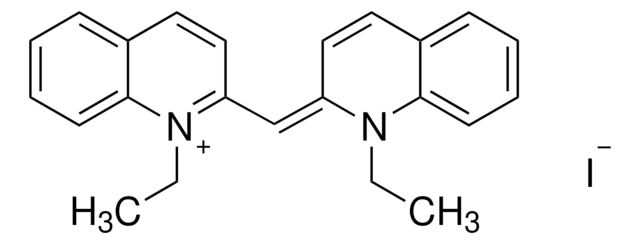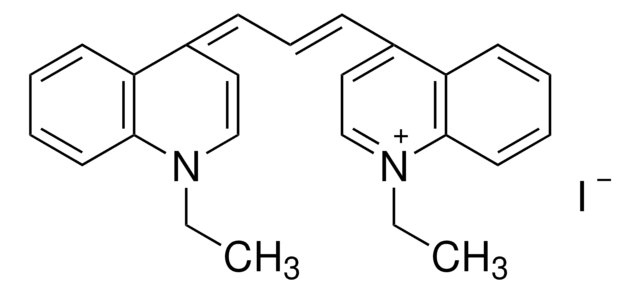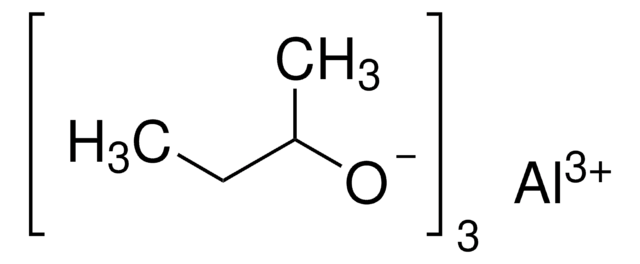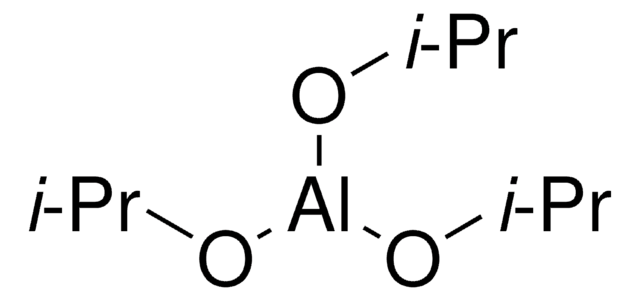201715
Pinacyanol chloride
Sinónimos:
1,1′-Diethyl-2,2′-carbocyanine chloride, 2,2′-Trimethinequinocyanine chloride, Quinaldine blue
About This Item
Productos recomendados
formulario
powder
Nivel de calidad
mp
270 °C (dec.) (lit.)
λmáx.
560 nm (2nd)
604 nm
ε (coeficiente de extinción)
≥150000 at 603-609 nm in ethanol at 0.001 g/L
≥65000 at 559-565 nm in ethanol at 0.001 g/L
aplicaciones
diagnostic assay manufacturing
hematology
histology
temp. de almacenamiento
room temp
cadena SMILES
[Cl-].CCN1C(=C\C=C\c2ccc3ccccc3[n+]2CC)\C=Cc4ccccc14
InChI
1S/C25H25N2.ClH/c1-3-26-22(18-16-20-10-5-7-14-24(20)26)12-9-13-23-19-17-21-11-6-8-15-25(21)27(23)4-2;/h5-19H,3-4H2,1-2H3;1H/q+1;/p-1
Clave InChI
FVMNARAKYNRZID-UHFFFAOYSA-M
¿Está buscando productos similares? Visita Guía de comparación de productos
Categorías relacionadas
Acciones bioquímicas o fisiológicas
Palabra de señalización
Warning
Frases de peligro
Consejos de prudencia
Clasificaciones de peligro
Eye Irrit. 2 - Skin Irrit. 2 - STOT SE 3
Órganos de actuación
Respiratory system
Código de clase de almacenamiento
11 - Combustible Solids
Clase de riesgo para el agua (WGK)
WGK 3
Punto de inflamabilidad (°F)
Not applicable
Punto de inflamabilidad (°C)
Not applicable
Equipo de protección personal
dust mask type N95 (US), Eyeshields, Gloves
Elija entre una de las versiones más recientes:
¿Ya tiene este producto?
Encuentre la documentación para los productos que ha comprado recientemente en la Biblioteca de documentos.
Los clientes también vieron
surfactants in aqueous medium
Nuestro equipo de científicos tiene experiencia en todas las áreas de investigación: Ciencias de la vida, Ciencia de los materiales, Síntesis química, Cromatografía, Analítica y muchas otras.
Póngase en contacto con el Servicio técnico










